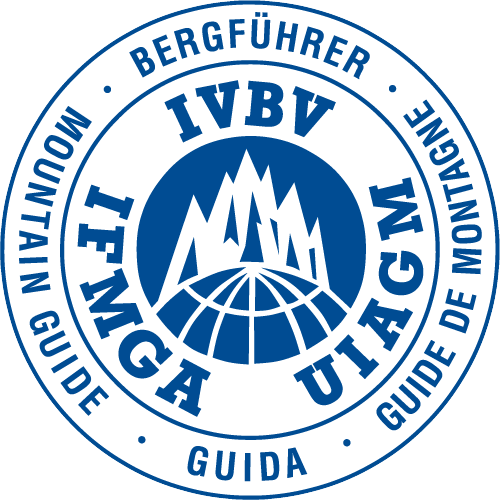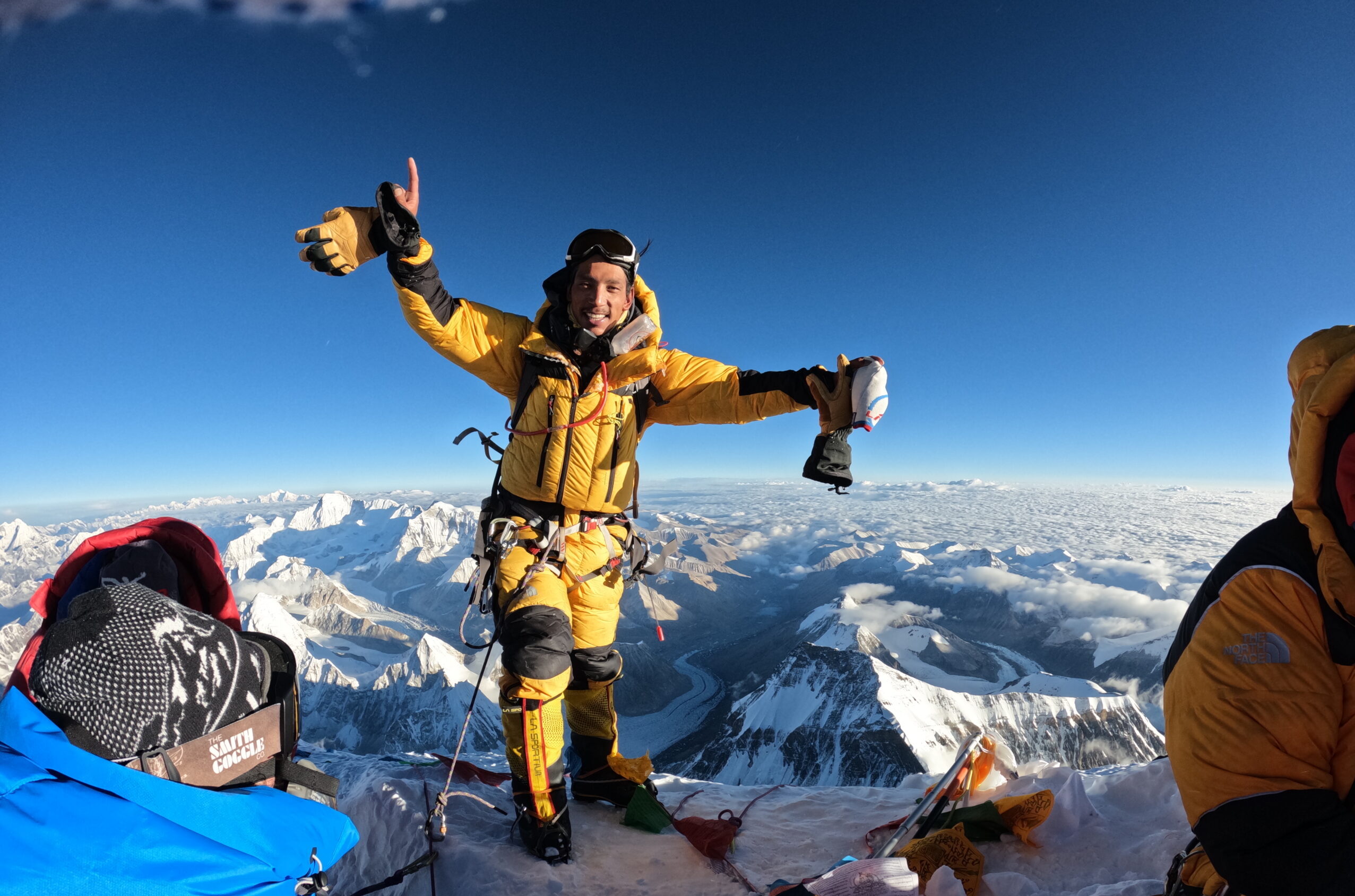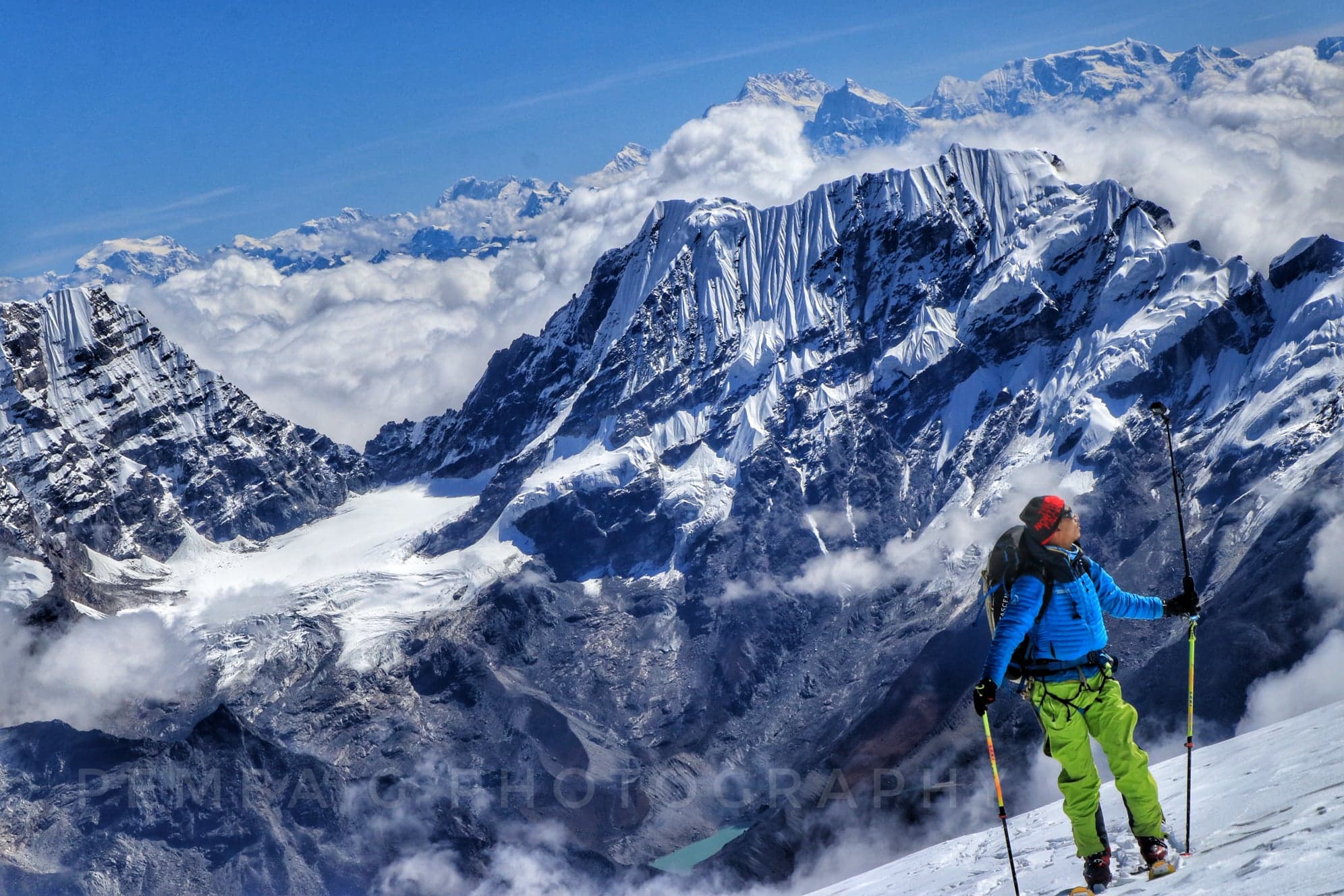

Our team is here to support you 24/7. Please feel free to provide your queries. You will get response within few minutes.

Starts at $49,000



Everest is the highest mountain in the world at an elevation of 8848.86 meters above sea level. It lies on the Nepal-China border in the Solukhumbu district. Nepal shares the southwest face of Everest while the north and east faces are in Tibet, China. Everest is surrounded by high mountains such as Lhotse, Pumori, Nuptse, Lho La, Sartse, Changtse, and so on.
Climbing Everest requires a good deal of high-altitude climbing experience. This is why most Everest expeditions start with smaller peaks of 6000, 7000, and even other 8000-meter peaks. There have been approximate ~10,000+ summits from Nepal and China combined.
Everest was summited for the first time in 1953 May 29 by Tenzing Norgay and Edmund Hillary as part of a British expedition. There have been multiple records and also a few tragedies on Everest. The Everest expedition passes through the Khumbu region which incorporates some of the highest settlements in the world. The trek up to Everest base camp is an exciting experience, moving through the natural and cultural wonders.

42 Days Expedition / (SKILL LEVEL: extreme)
Upon your arrival in the Kathmandu airport (KTM) you will be greeted by a representative from us. After completing your custom formalities (Visa, etc) pick up your luggage and look for our representative with a our company’s display board at the arrival gate. You will be then transferred to your hotel. After check in, you will visit our office, meet your trekking guide as well as other participants and do final preparation for the trip. Later in the evening there will be a welcome dinner which will introduce you to the Nepalese food culture.
Sightseeing and Preparation for Everest Expedition. While the leader attends a formal briefing in the Ministry of Tourism, you will explore the fascinating city of Kathmandu. Take rest, familiarize, and make a sightseeing tour to Kathmandu’s World Heritage Sites. We make a guided tour to some of UNESCO World Heritage Sites in the Kathmandu valley: Kathmandu Durbar Square, Pashupatinath, Swayambhu, and Boudhnath.
We will be for finalizing official procedure and other necessary arrangements. You will be also briefed on the nature of expedition, equipments and team composition. You can also make your last minute buying of personal items as you will be flying to the Himalayas tomorrow. In the late afternoon, the leader will check everyone’s equipment, as Kathmandu is the last opportunity to buy anything missing. You will also get introduced with fellow expedition members and guides.
An early morning scenic flight to Lukla. The mountain flight over to Lukla is one of the most beautiful air routes in the world culminating in a dramatic landing on a hillside surrounded by high mountains peaks. In Lukla, we will meet our camp staff and porters.After meeting our other crew members and with some packing and arrangements, we start our trek through the prosperous village of Lukla until we reach Phakding. Phakding lies on the main trade route through the area and there are a number of clean well-built lodges where we can spend the night.
Continue up the banks of the Dudh Kosi, crossing it twice by small suspension bridges before reaching the village of Monjo where we will enter the Khumbu National Park. Cross the confluence of the Dudh Kosi and the Bhote Kosi on a high suspension bridge and climb steeply for about two hours to reach Namche Bazaar. This is a prosperous trading town and the capital of the Khumbu region with genuine Tibetan artifacts.
We spend a day in Namche Bazar resting and allowing our bodies to become acclimatized to the altitude of 3,450m (11,300ft).Although a leisure day, it’s important not to remain idle. Health experts always recommend us to stay active and moving during the rest day too instead of being idle. We either spend the day taking a day hike to Thame or visiting Khunde or relaxing and exploring Namche Bazaar itself. Namche Bazzar is the main centre of the Everest (Khumbu) region and has government offices, ATMs, Internet cafes, shops, restaurants, a bakery and a colorful market each Friday evening and Saturday. If we trek a few hundred vertical feet during the day, it will help us to properly acclimatize. Our guides will take us to the Tourist Visitor Center near the headquarter of the Sagarmatha National Park where we can observe an assortment of things related to the first Everest ascenders, Sherpa culture and learn about the various plant and animal life of the Everest region.
The well worn Everest trail contours around the side of the valley high above the Dudh Kosi. Follow the path, savoring the first really good views of the great peaks of the Khumbu: Everest, Lhotse, Nuptse and Ama Dablam. Passing by several villages and numerous tea shops, cross the Dudh Kosi River and make a steep climb to Thyangboche, home of an impressive and newly rebuilt monastery.
We pass through several Chortens and Mani walls and small villages. We enjoy lunch with fantastic close-up views of Ama-Dablam. Shaded by rhododendron trees, the path leads gradually down to the river once again to another airy suspension bridge. An hour’s walking from here brings us to Pangboche, an excellent viewpoint for Ama Dablam. Contouring up the valley side, re-cross the river and turn up the Imja valley to reach the picturesque farming village of Pheriche.
Continuing up the trail towards base camp. Reach Dugla situated below the snout of the Khumbu Glacier, a convenient place for lunch. After lunch, the trail starts steeply to climb up beside the glacier moraine. After a couple of hours the track eventually leads to a small cluster of tea houses pleasantly situated at Lobuche.
Contouring along the valley-side and looking down on the Khumbu Glacier, follow a reasonable trail to Gorak Shep. This was the site of the base camp in 1953 and now consists of a few small tea houses. Leaving Gorak Shep, the trail leads on to the moraine of the Khumbu Glacier and becomes quite vague, weaving between mounds of rubble and eventually reaching base camp near the foot of the Khumbu Icefall. This will be our home for the next six weeks.
On 11th day, We prepare and start our climb to The Mount Everest (South Face). Total climbing period is 49 days including rest day before the climb.
All team members return to base camp and assist with packing expedition stores and cleaning the base camp area and Trek down to Thyanboche.
We Trek down to Namche from Thyanboche which takes aprox. 7 hrs.
On 63rd day, we trek down to Lukla from Namche which take aprox. 6 hrs.
We take an early flight to kathmandu.
Our representative will drop you off at the airport for your flight back home.
The Everest expedition with Lobuche Peak is undoubtedly challenging. It requires a certain set of gear and equipment. Here is a list of gear and equipment to bring for the trip.